You can learn a lot from paintings depicting events that happened during the Civil War, both on and off the battlefield. Winslow Homer, Frederic Edwin Church, and Eastman Johnson, all famed for their own distinctive styles and motifs, are among the American artists who captured various glimpses into the four-year struggle. Rather than following the European style of glamourizing the hero on the battlefield, they sought to capture the war’s transformative impact. Here are some of the most powerful paintings capturing fleeting moments of gravitas.
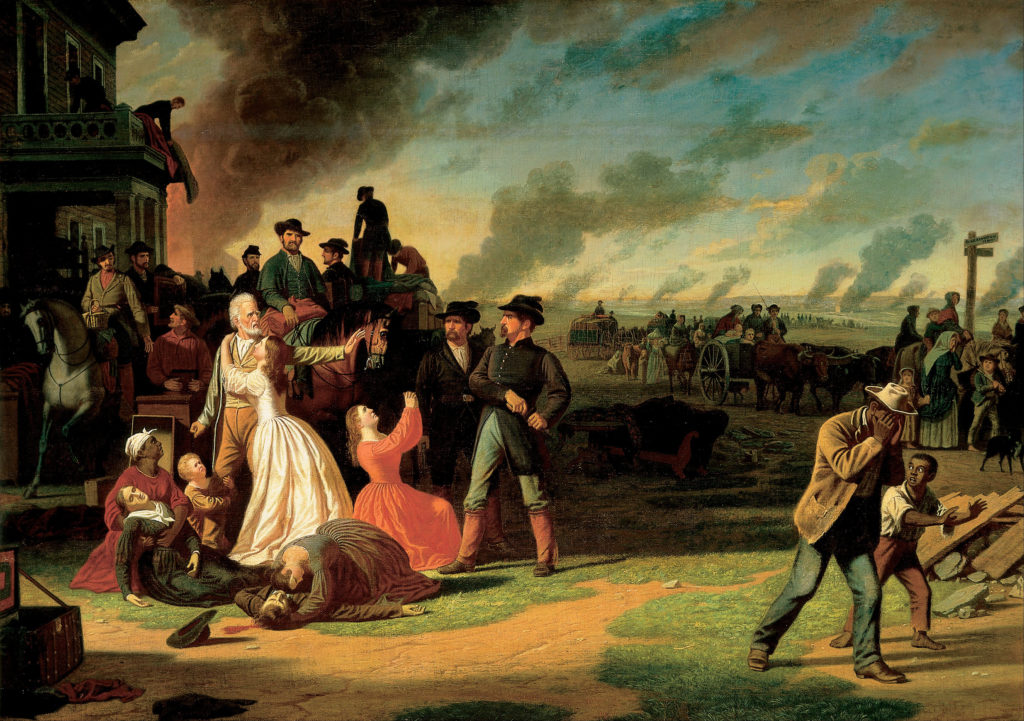
In protest of Missouri’s martial law on the Kansas-Missouri border, George Caleb Bingham, who was a Conservative Unionist, painted this striking work depicting Federal troops brutally looting loyal Missourians. He claimed it was a matter of liberty being threatened by military despotism: Order No. 11 was “an act of imbecility,” he said. However, his efforts backfired, with everyone from newspaper editors to ministers lambasting him for showing Union troops in a bad light and sympathizing with the South.
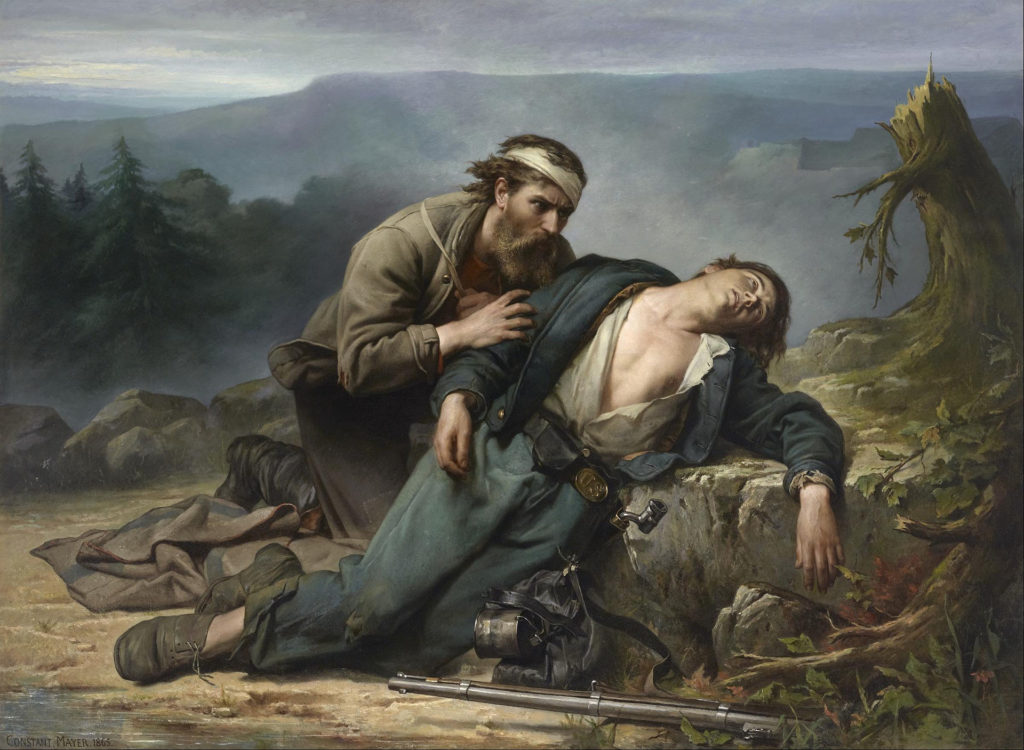
As a Union soldier dies on a battlefield, a Confederate soldier holds him close, in grief. The title “Recognition” refers to the fact that the living soldier has just recognized the man he has killed as his younger brother. Constant Meyer captures the sorrow of the Civil War, in which brothers, sons, fathers, and friends fought one another. Behind them, the landscape contrasts life and death: the lush forest behind the living soldier, the stark rocks behind the dying one.
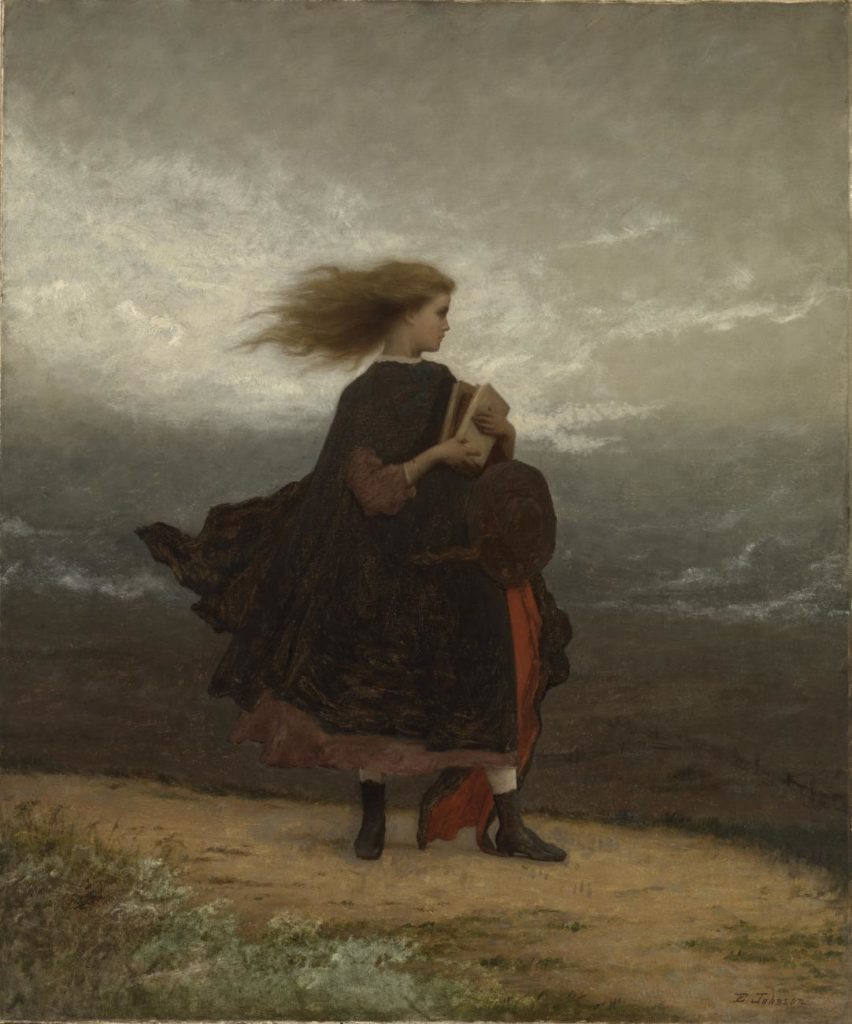
Named after an Irish ballad popular at the time, this striking painting depicts a young girl standing on a promontory, seemingly tentative about which direction to go. It’s possible she is waiting for a husband who has gone to war—her gold wedding ring glints in the darkness. Behind her, a split-rail fence below and swirling fog above bespeak a world filled with division.
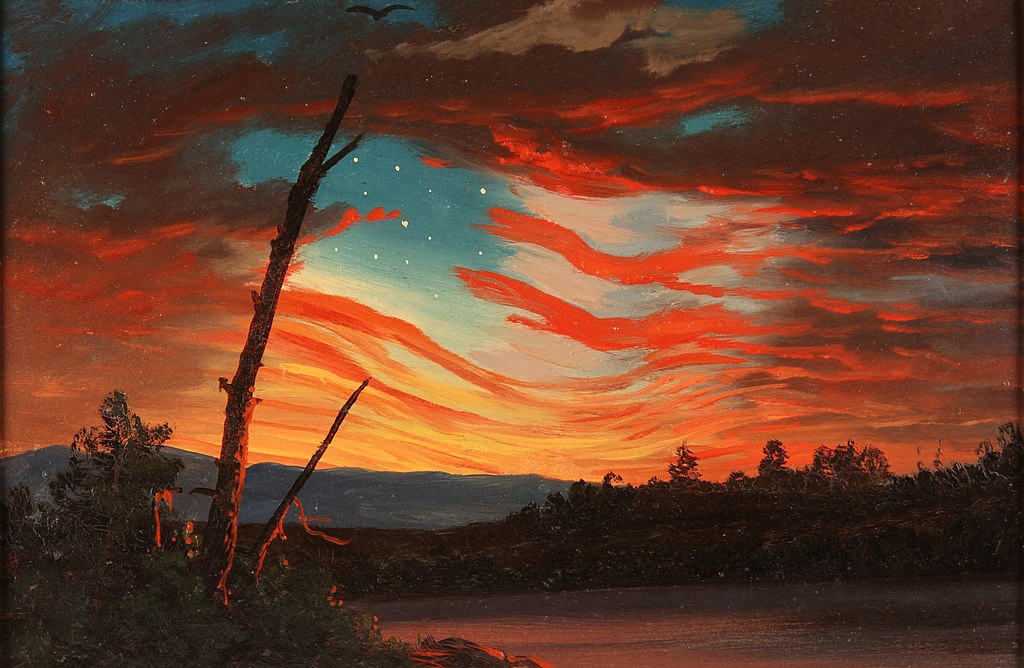
After Fort Sumter was attacked in 1861, thereby kicking off the Civil War, the fort’s tattered American flag was brought to the North, where it starred in a series of patriotic rallies. Church painted this allegorical painting of the flag, with a tree trunk serving as a flag pole, and a vibrant sunset forming the red and white stripes. The stars set against the twilit sky poke through a break in the clouds.
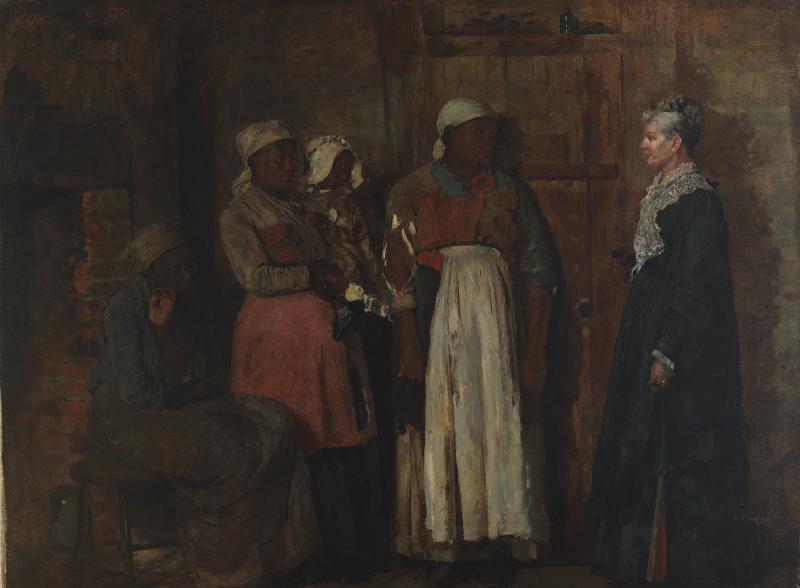
This painting, capturing a tense moment after the Civil War in the South, portrays formerly enslaved individuals who no longer are required to greet their mistress with decorum. The mistress is now a guest in their humble home, part of a new reality that was still being defined. Note the one woman who remains seated, something she would not have been allowed to do before the war. Homer painted the work from different sketches he made in Virginia.
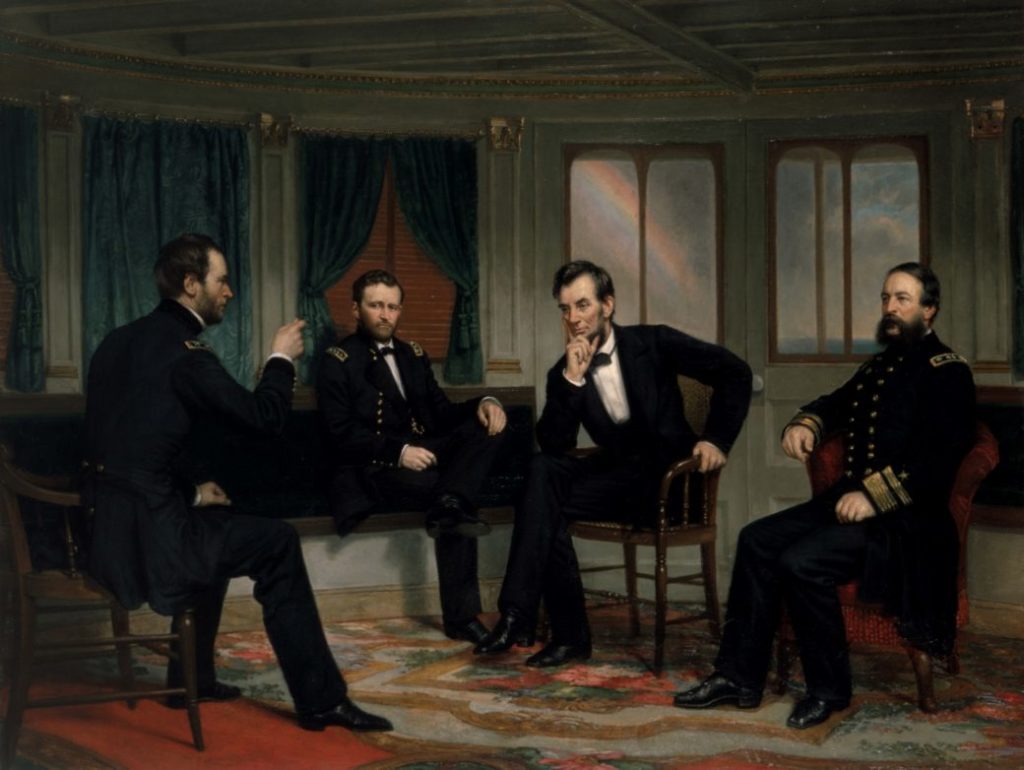
Seated in the Union steamer River Queen just before the fall of Petersburg, Virginia, are Maj. Gen. William T. Sherman, Lt. Gen. Ulysses S. Grant, President Abraham Lincoln, and Rear Adm. David D. Porter. They are here to discuss the terms of the peace to follow. George Healy was not present for the meeting, but he had already painted individual portraits of each of the men and recomposed the scene that way. The original painting was destroyed in a Chicago fire in 1893; this smaller rendition surfaced 50 years later and was acquired by President Truman for the White House Collection.
